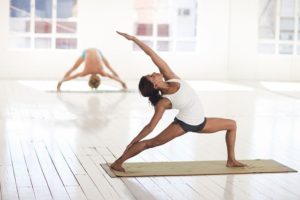 As more people try to lead active lifestyles, the gym has become a place where they spend several hours of their time each week. If you’re a gym owner or manager, it’s only right that you give your clients the best possible experience, from the equipment and trainers to the atmosphere or feel of the entire facility.
As more people try to lead active lifestyles, the gym has become a place where they spend several hours of their time each week. If you’re a gym owner or manager, it’s only right that you give your clients the best possible experience, from the equipment and trainers to the atmosphere or feel of the entire facility.
Lighting plays a big role in creating a specific ambience in a gym or any other indoor facility. Light not only allows gym goers to see what they’re doing, but it also influences how they feel.
For example, dim and soft lighting can have a soothing effect on people, which is why it’s commonly found in restaurants and cafés. With gyms, on the other hand, you want people to feel alert and energized. That means having a generous amount of lighting in all rooms.
Of course, there’s more to gym lighting than just having bright light. We go over a few more tips below, which you can apply to your health and fitness facility in [city].
1. Low Glare and Uniform Lighting
Gyms often have a lot of reflective surfaces such as mirrors, equipment, and machines that can cause glare. This can get old real fast for people who just want to work out without squinting.
On the other hand, you don’t want a dark gym. Apart from being unsafe, a dim room can make people feel slugging. What you should do is install lights that have an even glow, to ensure the facility is uniformly lit. Be sure to direct lights away from mirrors to prevent distracting glare.
2. Go for LEDs
LEDs or light-emitting diodes are perhaps the most popular lighting option today, and for good reason. LEDs are the most energy-efficient lighting solution on the market and boast a lifespan of well over 20,000 hours. That means less energy used for lighting and fewer light bulb replacements.
LEDs also generally have outstanding light quality. Be sure to look for LEDs with a high CRI (color rendering index) score. This is a measure of how accurate colors appear under a light source (e.g. how reds are and how blue blues are). The higher the CRI, the better.
3. Mind the Height
If your gym has a low to moderate ceiling height, you want to avoid using pendant lights or any other hanging fixtures. Instead, use fixtures that stay flush to the ceiling, like recessed light and flush mount lights.
These fixtures also cover a good amount of space so you get a well-lit area with fewer fixtures to worry about.
4. Have Flexible Light Options for Multi-Use Areas
Whether it’s a yoga space, a dance floor, or a mat area for jujitsu, most gyms have a multi-purpose areas for group classes and activities. For these spaces, it’s best to have lighting that can be changed depending on the use of the space.
A great way to achieve this without spending too much is by installing a dimmer. When you need the space to be bright for a Zumba or aerobics class, just turn the brightness up. Similarly, you can turn the lights down low for yoga and Pilates.
Keep these lighting tips in mind when planning your gym or health facility’s lighting setup.

![LEDs Can Save Millions in [city]. How Much Can They Save You? [city]](https://8blocks.s3.amazonaws.com/eepros/blog-images/2014/08/LED-Bulbs-300x203.jpg)
![7 Ways to Increase Commercial Energy Savings in 2020 in [city] [city]](https://eepros.com/wp-content/uploads/2020/03/escalator-283448_640-300x197.jpg)
![Top Reasons Why Metal Halide Lights Can’t Compare to Commercial LED Fixtures [city]](https://eepros.com/wp-content/uploads/2020/06/light-918450_640-300x200.jpg)
![How LED Lighting Has Changed Over The Years [city]](https://eepros.com/wp-content/uploads/2017/07/kitchen-2486092_640-300x200.jpg)